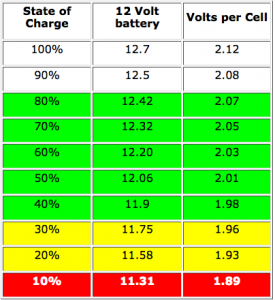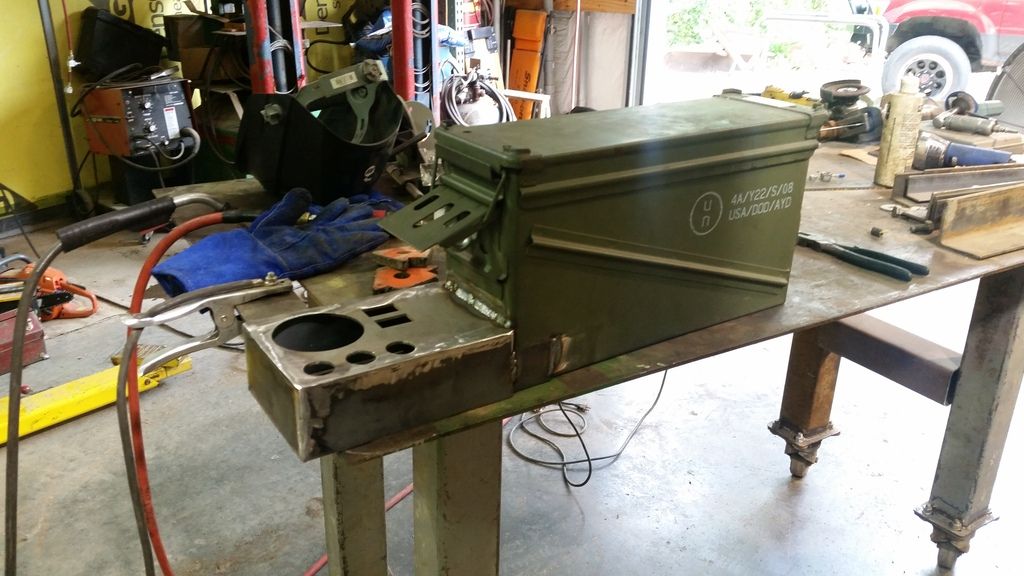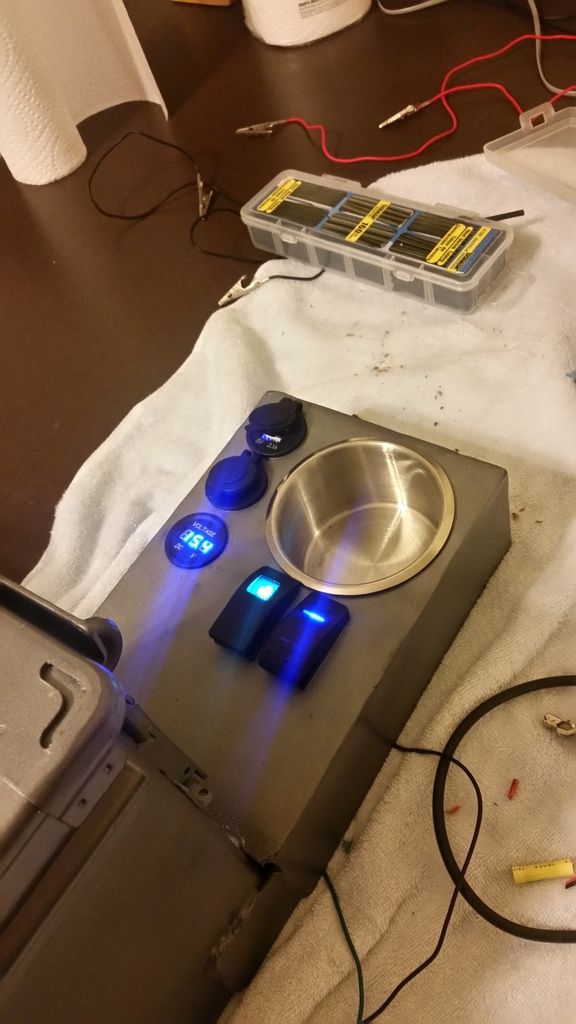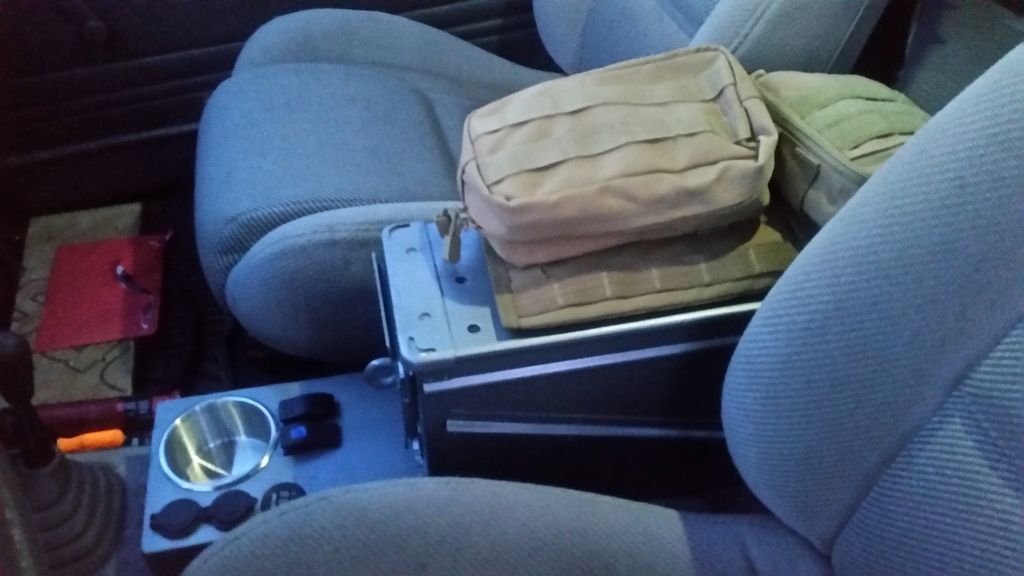^^
If one is available... (I don't recall if the OP said what battery he has or plans to use)
It seems many (most?) manufacturers don't have SoC charts for automotive & marine style batteries. Some very costly brands like LifeLine or Odyssey make them available if you dig deep enough (Exide does too), but they seem harder to find for others such as Deka, Interstate, etc. or most any house-branded battery (a bit surprisingly I failed to find one on the Northstar site too... maybe I just missed it?).
I wouldn't suggest anyone use the charts posted above though (a battery headed to 11.8V should trigger a red-alert, not caution-yellow). Taking a battery much below 12.0 volts with any regularity is a certain quick way to commit battery-homicide.
If you know the composition of your battery's construction (lead-calcium, lead-antimony, or pure-lead), a manufacturer's chart isn't that important. All batteries of the same composition typically are within a few percent of each other:
So-called "maintenance-free" and sealed batteries (both FLA and AGM) will nearly always be lead-calcium or pure-lead.
These will be approx 12.85-13.1 VOC @ 100% SoC, and 12.2-12.35 VOC @ 50% SoC.
These are the numbers you will probably want to pay attention to since this is by far & wide the most common type among all automotive & marine style batteries.
Lead-antimony automotive batteries are much less common now, a very small number of flooded deep-cycle batteries of this type remain (such batteries were sometimes called "low-maintenance"). These consume water during charging (requiring you check the levels occasionally), which a byproduct of this was the significant hydrogen gas they created.
A lead-antimony battery will be approx 12.65-12.75 VOC @ 100% SoC, and 12.15-12.25 VOC @ 50% SoC.
The voltage vs. SoC charts on this page break it down for the above types with more detail:
http://jgdarden.com/batteryfaq/carfaq4.htm#mf_soc









